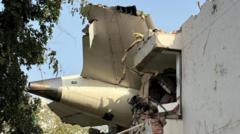New findings suggest that minor adjustments to flight paths can significantly reduce contrail-induced warming, providing a simple, low-cost solution to a pressing climate issue, set to be discussed at COP29 in Baku.
Economical Solutions Proposed to Mitigate Jet Contrails' Climate Impact

Economical Solutions Proposed to Mitigate Jet Contrails' Climate Impact
Researchers propose a cost-effective approach to addressing the warming effects of jet contrails, which could be implemented at a low expense per flight.
A fresh perspective on mitigating climate impacts from aviation shows promise in tackling the warming effects caused by jet contrails, or condensation trails. A recent study indicates that the harmful vapors trailing behind aircraft, often an overlooked aspect of climate change, can be effectively addressed with minimal expense—approximately £4 per flight.
Contrails form in the atmosphere when hot exhaust from airplane engines encounters cold, humid air, causing water vapor to freeze into ice crystals and creating visible clouds. While the phenomenon has been recognized for years, the significant warming impact of these artificial clouds has only gained attention in recent years. Carlos Lopez de la Osa from the Transport & Environment organization emphasizes that the warming effect of contrails can rival that of carbon emissions produced by aviation.
Misconceptions surrounding contrails, such as conspiracy theories like "chemtrails"—which suggest they contain harmful substances for population control—complicate discussions around aviation's climate footprint. These claims lack scientific support, a point highlighted by Matteo Mirolo of Breakthrough Energy. During COP29 in Baku, authorities and researchers aim to clarify these misconceptions while advocating for straightforward solutions to lessen contrail contribution to global warming.
Approximately 80% of contrail-related warming stems from just 3% of flights, particularly those traversing North America, Europe, and the North Atlantic. Timing and geographical factors play significant roles in contrail formation and their subsequent warming effects. Evening and night flights tend to produce the most substantial warming impacts, with winter months exacerbating the issue.
Adapting flight planning to avoid areas likely to form contrails is a feasible yet crucial step forward. Experts predict that implementing these changes could achieve over a 50% reduction in contrail warming potential by 2040, marking a significant climate win at a fraction of the cost compared to other planned aviation interventions.
COP29 provides an essential platform to raise awareness about the contrail issue, underscoring a shift in aviation practices that could yield substantial environmental benefits and promoting collaborative efforts toward sustainable aviation initiatives.





















